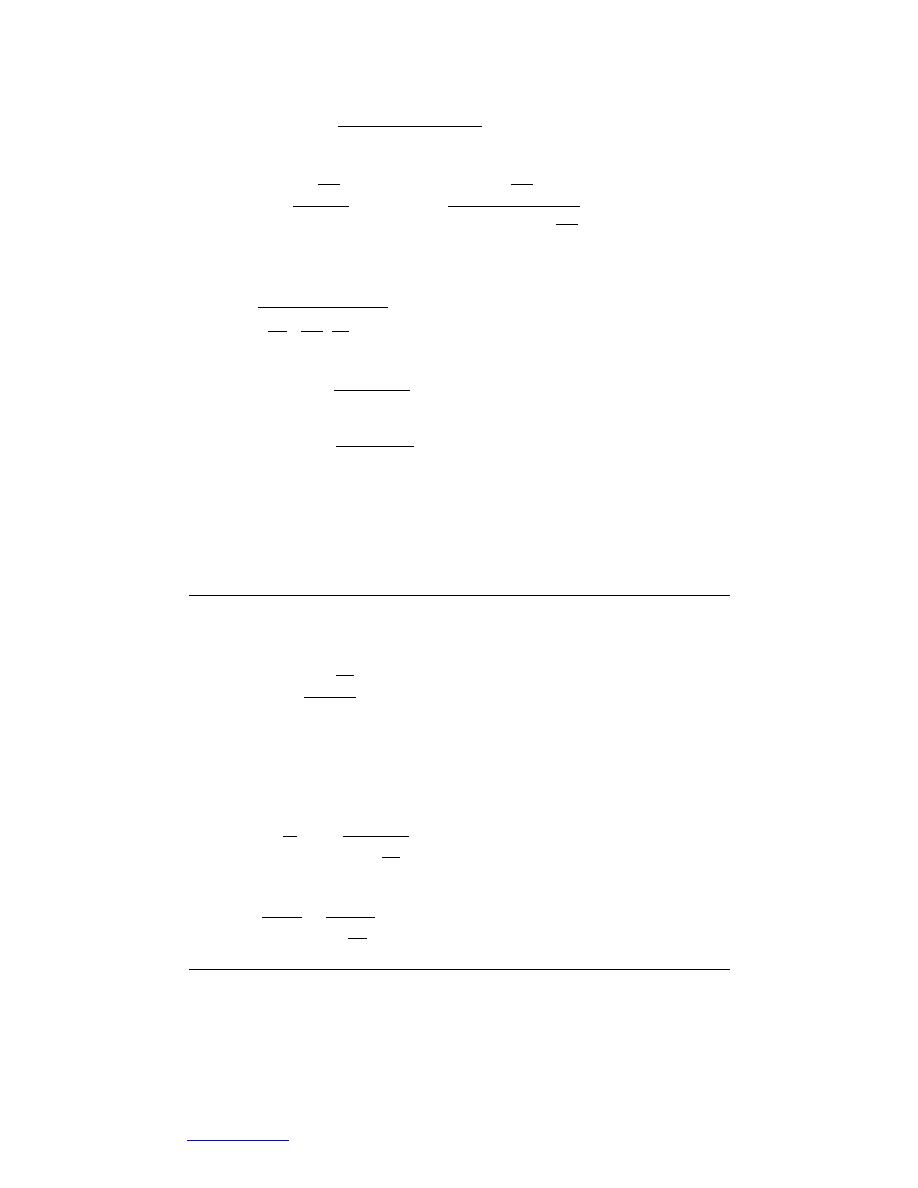
tinsulation
Rpipe insulation =
(53)
kinsulation Pinsulation ⋅ 1
Do
D
ln o
ln
Di
Di
=
, or Rair gap =
(54)
Rair gap
2πkeff ⋅ 1
D
2π keff + A2hr ln o
Di
where
(
)
σ T12 + T2 ) (T1 + T2
2
hr =
(55)
1 A1 1
+
- 1
ε 2 A2 ε1
tlining
Rthermal lining =
(56)
k lining PL ⋅ 1
tcasing
Rexterior casing =
(57)
kcasing PE ⋅ 1
is the inside diameter (of the air gap), and t is the thickness of the casing or lining.
Table 1. Methods of determining the effective thermal conductivity of an air gap.
Number
keff
Source
Comments
0.29
1
eq 37
Based on cylinder, radiation included*
0.11RaL
k air
0.153
Based on cylinder, radiation included†
2
eq 38
1.463RaL
k air
Do
Do ln
Di
0.25
Based on rectangular enclosure, y is enclo-
0.34GrD
kair
3
eq 48
(y - Di )
i
sure height, includes radiation.**
0.2
4
Holman (1976)
Based on cylinder, radiation not included.
0.40Ra L k air
0.157
5
eq 39
Based on cylinder, radiation not included.
0.68RaL
k air
keq kair
eq 2834
Based on cylinder, radiation not included.
6
L
0.207
Do - Di
1.81 RaL
kair
7
eq 40
Based on rectangular enclosure, radiation
D
rp
not included.
Do ln o
Di
T0 - Ta 0.25
1
0.23
8
Smith et al. (1979) Based on cylinder, pipe is uninsulated,
D
rp
ln o
Di
included††. keff is zero if the pipes are in-
sulated.
* Emissivities unknown; the correlation is based on work reported in German, circa 1930.
† Emissivities were assumed to be 0.5 and 0.9 for the insulated pipe surface (two test conditions), 0.9
for the enclosure.
** Materials were copper pipe and polymerized methyl methacrylate for the enclosure; no surface treat-
ment or level of copper pipe oxidation was reported.
†† This is another "older" correlation; the underlying references were not given, but may be attributed
to McAdams (see Grober et al. 1961, pp. 320321).
12
Go to Contents



 Previous Page
Previous Page
